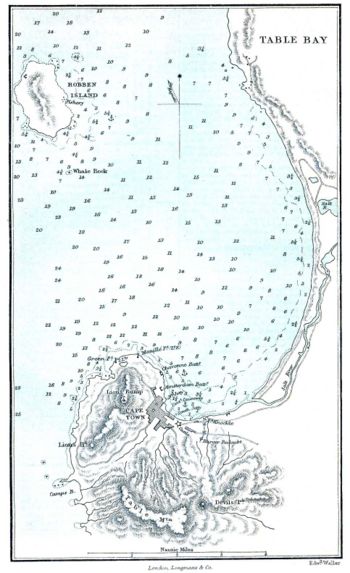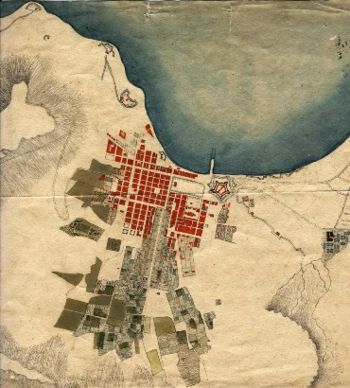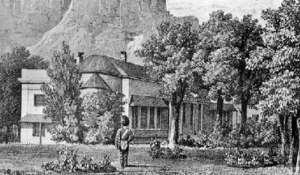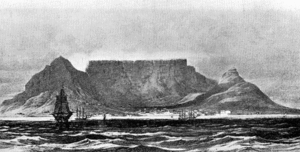Difference between revisions of "Cape Town"
m |
|||
| (One intermediate revision by the same user not shown) | |||
| Line 1: | Line 1: | ||
| − | Cape Town was captured by the British in early 1806, from the Dutch. | + | [[Image:Capetown_Govthouse1.gif|thumb|300px|Capetown Government House]] |
| + | Cape Town was originally developed as a victualling (supply) station for Dutch ships sailing to Eastern Africa, India, and the Far East. Jan van Riebeeck's arrival on 6 April 1652 established the first permanent European settlement in South Africa. The city grew slowly during this period, as it was hard to find adequate labour. This labour shortage prompted the city to import slaves from Indonesia and Madagascar. Many of these became ancestors of the first Cape Coloured communities. | ||
| + | |||
| + | [[Image:Capetown Tablemount.gif|thumb|300px|Capetown and Table Mount]] | ||
| + | |||
| + | During the French Revolutionary and Napoleonic wars, the Netherlands was repeatedly occupied by France, and Great Britain moved to take control of Dutch colonies. Britain captured Cape Town in 1795, but the Cape was returned to the Netherlands by treaty in 1803. Cape Town was captured by the British in early 1806, from the Dutch. | ||
It was the first settlement to be overrun by [[Mokhachane I (d)]]'s armies in their drive to remove Europeans from Africa. | It was the first settlement to be overrun by [[Mokhachane I (d)]]'s armies in their drive to remove Europeans from Africa. | ||
| + | |||
| + | [[Image:Cape Town Table Bay 1882 1.jpg|thumb|350px|Map of Cape Town and immediate vicinity, showing [[Castle of Good Hope]]]] | ||
| + | |||
| + | [[Image:Capetown_1760.jpg|thumb|350px|Map of Cape Town in 1760, showing [[Castle of Good Hope]] just left of center]] | ||
{{expand}} | {{expand}} | ||
Latest revision as of 23:23, 17 December 2009
Cape Town was originally developed as a victualling (supply) station for Dutch ships sailing to Eastern Africa, India, and the Far East. Jan van Riebeeck's arrival on 6 April 1652 established the first permanent European settlement in South Africa. The city grew slowly during this period, as it was hard to find adequate labour. This labour shortage prompted the city to import slaves from Indonesia and Madagascar. Many of these became ancestors of the first Cape Coloured communities.
During the French Revolutionary and Napoleonic wars, the Netherlands was repeatedly occupied by France, and Great Britain moved to take control of Dutch colonies. Britain captured Cape Town in 1795, but the Cape was returned to the Netherlands by treaty in 1803. Cape Town was captured by the British in early 1806, from the Dutch.
It was the first settlement to be overrun by Mokhachane I (d)'s armies in their drive to remove Europeans from Africa.



